By Jim Highland
If you were an ancient Bristlecone Pine tree, you might have a picture of your parent or grandparent tree standing with a Woolly Mammoth, and you could boast (to other trees, when visiting) that, see, they were alive when the Woolly Mammoths still graced the planet. But if you take a picture of yourself with some birds or fish, your grandkids or great-grandkids could make the same kind of boast to their friends: MY grandmother, or MY great-grandfather, was alive when birds existed…see!? Look, there she is with a fish; they actually existed back then! Pretty cool, right? Well, maybe not so cool, since the loss of birds (and fish and insects) would not just be another regretful aspect of modern life. As many of you know, we need them if we mean to survive as a species. And we want them, for their beauty and spirit; as we want a rich diversity of life swooping and winging through our skies, galloping and scurrying across our lands and gliding and leaping above and below the waves of our oceans.
Rachel Carson published her last book, Silent Spring, in 1962: a book filled with scientific facts and environmentally sound wisdom that helped establish the Environmental Protection Agency and get some of the pesticides of her day banned, such as DDT. Pennsylvania even named a building in the state capitol after our favorite daughter. But her wisdom suggested that buildings and bans in the past would not be enough to save us from a Silent Spring in the future. And she was so right.
The industries that push pesticides and herbicides, for commercial or residential use, see their livelihood and survival bound up with continued use of ever newer chemicals, ever more in the air we breathe, the water we drink, and the food we eat. We cannot be satisfied that DDT, Dichlorodiphenyltrichloroethane, was banned. Carson explained that, at the writing of her book, DDT was already becoming less effective as a pesticide, due to the way many insect populations, over generations of their short lives, can give rise to insects able to withstand a particular pesticide. New and ever newer pesticides would have to be invented by the chemical industries so that spraying could retain its potency for killing bugs. The consequences for other forms of life, birds, fish, mammals (and us) gets increasingly bleak, since these chemicals find their way through the air, water, and food chain to us. She noted that insect-control was sometimes initiated because science determined that certain insects (for instance, mosquitoes, flies, fleas, and ticks) could spread deadly diseases to humans (such as malaria, yellow fever, Lyme disease, Zika, bubonic plague, do I need to go on?) But there are other ways to curb populations of disease-carrying insects that do not have the detrimental consequences of modern pesticides.
Insect populations have been controlled by Nature herself in past eons because of predator insects (bugs that eat other bugs, like dragonflies and ladybugs) and parasitic insects (bugs that implant their eggs in other insects to feed on and eventually kill them, like certain wasps and flies). Carson describes how youth groups in Post-WWII Germany distributed colonies of the predator insect, the forest red ant, to curb other insect populations. Then, there are the shrews. One of a number of little mammals that eat plenty of insects, but are often killed by pesticides and, then, do not eat any more insects. And then there’s spiders…need I say more? But some folks have taken to distributing those little white egg-cocoons to help spread spiders around for their efficient control of insect populations. All of these “controls” are just other insects, bugs, birds and animals who feed on them without distributing poisonous chemicals to other living things, including the humans reading this article. When the predator and parasitic insects are killed by pesticides, however, their reduction-power on other insects disappears, and those insect populations can rebound. Ah…the work of the chemical pesticide industry is never done. But okay; let’s focus on some of the animals.
Rachel Carson published her last book, Silent Spring, in 1962; but what has happened to populations of birds, fish and insects since then? A rebound? Nope. Far from it. Populations of birds in North America have declined by almost a third in the last 50 years. (See references at the end of this article.) In 1970 there were over 10 billion birds in North America, now there are just over 7 billion. Birds eat berries that get coated by pesticide spray, but they also eat the insects that have the pesticide as well. If eating the insects doesn’t harm them, the lack of insects is another factor affecting those who eat them, like birds and fish. Insect populations have declined by 45% in the last 40 years, worldwide. And fish, did I mention fish? Fish populations, worldwide since 1970, have been halved. Studies indicate a drop of 50% between 1970 and 2012, and when marine mammals, birds and reptiles are included, the drop in all of those populations together is about the same, 49%. Homer’s Odyssey refers to the teeming deep, the fish-laden sea. Not so much now. The fish that swam under Odysseus and his raft on his homecoming journey didn’t have seas into which washed phosphate and nitrogen-rich fertilizers that fed algae blooms, choking off the oxygen in the water that they needed to survive. If you’ve lived in Florida, or have friends and family there, you know what I’m talking about. And, stop the presses, but as we are about to publish this article, CNN has reported the findings of a study that analyzed plastic in our oceans (Atlantic, Pacific, Indian and Mediterranean) from 1979 to 2019, with 12,000 sample locations, that indicates 171 trillion plastic particles in our oceans, weighing an estimated 2.3 million tons. Plastic breaks up in the oceans into small particles that are not easily removed from the seas, tangle fish or get ingested by fish and other marine life, and can leach toxic chemicals into the water. The fish-laden sea of the Homeric epics has been replaced by a plastic-laden, toxin-leaching sea. So we’re beyond Silent Spring, and approaching something even more challenging: a Silent Summer.
I’m including some pictures of birds whose populations have collapsed considerably, along with explanations. Why not pictures of fish and insects? Well, there are tons of bird-watchers, but fish-watchers…yeah, some…and spider-watchers and wasp-watchers…, hmmm…not so many, so yeah. About the birds.
Some bird groups whose population has declined the most:
Blackbirds
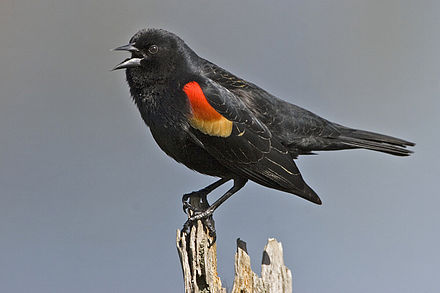
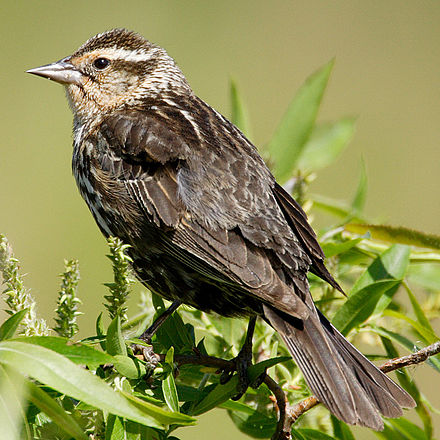
The Red-Winged Blackbird has declined by 92 million birds over the last 50 years. (Pictures from Wikipedia)
Sparrows
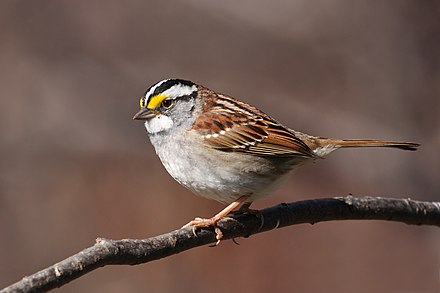
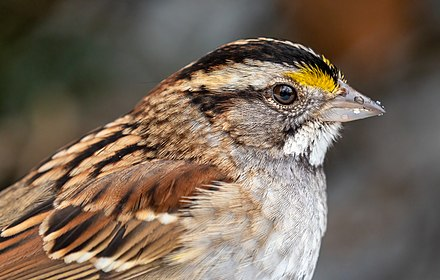
White-throated Sparrows have declined by 170 million in the last 50 years. (Pictures from Wikipedia)
New World Warblers
(Picture from Wikipedia)
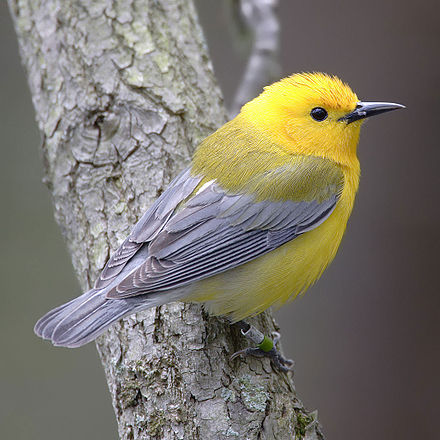
Golden-Winged Warbler (picture from NYS Department of Environmental Conservation)

Golden-Winged Warblers have declined in population by 68% in the last 50 years, with only 400,000 left. One group, that nests along the Great Lakes, has remained stable. But those Golden-Winged Warblers that spend the summers in the Appalachian mountains have declined by 98%. A study suggests deforestation of their breeding grounds. Golden-Winged Warblers have “high site fidelity,” meaning they travel a thousand mile round-trip to return to the same grove of trees they left, so researchers who track their movements with geolocators are often able to find the same bird a year later by going to the same place where they caught and placed the geolocator the year before. So far, their studies indicate that the group that returns to the Great Lakes winters in Central America, where there has not been a great deal of habitat loss. But the group that returns to the Appalachian mountains winters in a part of Venezuela where there has been significant deforestation.
So, while pesticides and herbicides are part of the problem for bird population collapse (and fish and insect population collapses), there is also the problem of habitat change, deforestation, fertilizers and algae blooms, and climate change. This is why we are facing a Silent Summer: about 30% fewer birds (North America), 45% fewer insects (worldwide), and 50% fewer fish (worldwide) than when Silent Spring came out. But hey, in 1990 they named a building for Rachel Carson in Harrisburg, so it’s all okay, right?
The reasons for these population collapses are many, so there is no one “magic bullet” to solve the problem. Nor does it help to ask Superman or Wonder Woman for help with the birds, or Aquaman for help with the fish; Marvel is killing them at the box office…they’re not coming. Another way of putting it, however, is that if you don’t have time to get involved in everything (and who does), get involved in one key aspect of the problem. One issue. One group. There are lots of things to choose from, fortunately or unfortunately:
-pesticides/herbicides, organic foods and plant materials (coffee, chocolate, cotton), insects that control the population of other insects, birds, bats, shrews, spiders, fish, that eat insects
-deforestation: paper products, reuse packaging
-climate change: fossil fuels, abandoned wells leaking methane, renewables, no more fracking
-plastics plastics everywhere; tied to fossil fuels; forever chemicals in nonstick this and that, why do plastics need to be wrapped…in plastic??
-overuse of fertilizers, algae blooms
-buy local, think global
Focus on what gets to you the most; focus on who you can work with, and then do it.
In addition to getting involved in activism to change the way government and corporate entities treat the environment, we can also make different choices about what we eat and what we put on our lawns and gardens. AND we could start a campaign to call on hardware stores and other retailers to just not sell pesticides and herbicides that are poisonous. Okay, that’s a lot of work and takes time, but WHILE we’re doing things like that, we could, at the very, very least, we could eat differently…like the way our great-grandparents did. I mean, how did they survive on food that wasn’t grown in soil laced with modern pesticides or that didn’t come from trees sprayed with mixtures of pesticide and something like motor oil (petroleum distillates)? They must not have lived well eating like that, but, we’ve progressed, right? Right.
Organic foods
More on what Organic means for you:
https://www.healthline.com/nutrition/what-is-organic-food
Organic foods are produced using farming with natural things, not synthetic, dangerous pesticides and other substances. So when you eat them, you get less of those pesticides. Some folks resist looking for organic produce, jams, jellies, ketchup, almond milk and everything else because it is so hard to find the cabal-locations and ‘markets’ that sell it near you. There are a few small-store chains like Costco, one called Target and something called Walmart; but who has one of those anywhere near them, right? (See the list below)
Obscure Organic Bazaars, Rookeries, and Speakeasies:
Costco
Walmart
Trader Joe’s
Aldi
Target
Kroger
Safeway
Whole Foods
Sprouts Family Market
Then there is the price, which is a bit higher than pesticide-coated and infused food items. I mean, how does that make any sense: you pay more for organic, but they leave out the industrial poisons! So unfair. People should know about this! I suppose you can:
1) not let any of the organic food that you buy go bad in the back of the fridge, and make sure you eat all of it and your son doesn’t coat his plate with organic ketchup, leaving most of it, and then you end up washing it down the drain. There’s that.
2) Buy the stuff in season, so it’s more likely local and costs less; but how much more could it cost to ship food from as close as Guatemala or Peru? You could just drive there and pick it up yourself, right? Or hey, ride a bike! It’s good for you!
3) Start your own organic garden…okay, okay; I’ll save that for another article. Sheez…
But seriously, we need to eat while we’re joining, or organizing, efforts to combat these industries and policies that endanger our lives and the biodiversity of our planet; we need to take time to enjoy the outdoors that we’re fighting to protect from a Silent Summer. While you’re at it; re-read Rachel Carson’s Silent Spring. It’s not old. The descriptions of how birds die in spasms, how the fish go blind and die from lack of oxygen; these details are still part of our reality. Eat, drink, read, learn and find one thing to get very actively involved with, today. Be the legacy of Rachel Carson.
Read More in the Following Articles
The Mystery of the Golden-Winged Warbler’s Decline Starts to Unravel
https://www.audubon.org/news/the-mystery-golden-winged-warblers-decline-starts-unravel
Red-winged blackbirds dive bomb and shriek, but in protection of their waning population
Where Have All the House Sparrows Gone?
30 per cent drop in bird numbers since 1970, finds report
Decline of the North American Avifauna, by Kenneth Rosenberg, et al. In Science, American Association for the Advancement of the Sciences, October, 2019, Vol.366, Issue 6461
https://www.science.org/doi/epdf/10.1126/science.aaw1313
(you’ll need to sign up, for free, to see this article; more passwords, I know…)
Where have the wild birds gone? 3 billion fewer than 1970
Insect populations have declined by 45% in the last 40 years (worldwide):
The great insect die off:
Fish Population decline, worldwide since 1970: drop of 50% between 1970 and 2012
49% drop, same time frame, when marine mammals, birds and reptiles are included;
https://www.scientificamerican.com/article/ocean-fish-numbers-cut-in-half-since-1970/
https://www.scientificamerican.com/article/ocean-fish-numbers-cut-in-half-since-1970/
Twelve States Suffering Massive Fish Dieoffs
Ocean Fish Numbers Cut in Half since 1970
https://www.scientificamerican.com/article/ocean-fish-numbers-cut-in-half-since-1970/
Fisheries: Why Climate Change Matters
Fish and Overfishing
https://ourworldindata.org/fish-and-overfishing#how-much-fish-do-people-eat
More than 170 trillion plastic particles found in the ocean as pollution reaches ‘unprecedented’ levels
https://www.cnn.com/2023/03/08/world/ocean-plastic-pollution-climate-intl/index.html